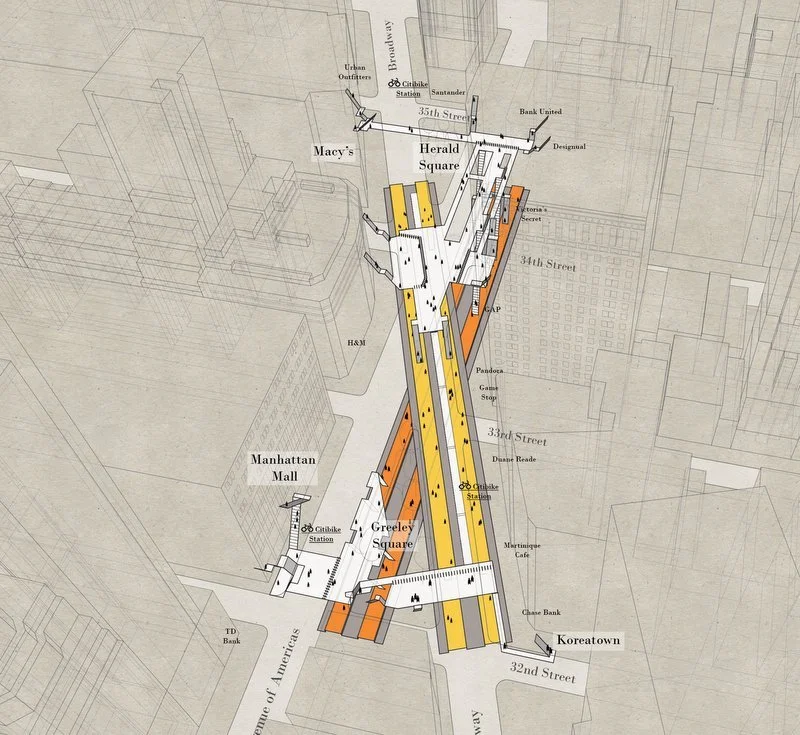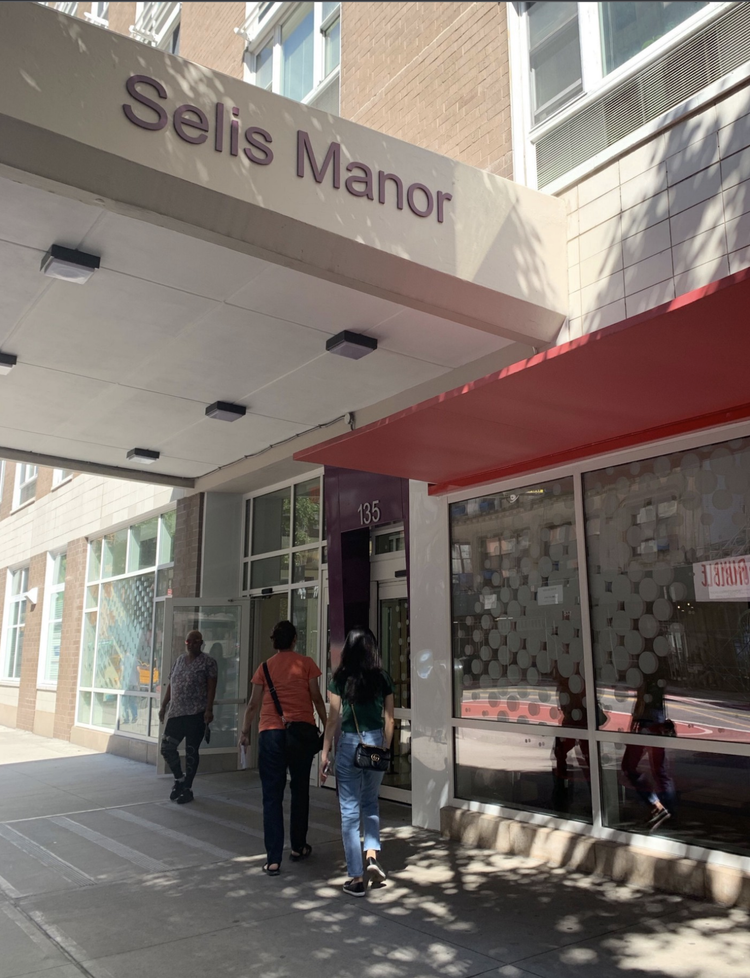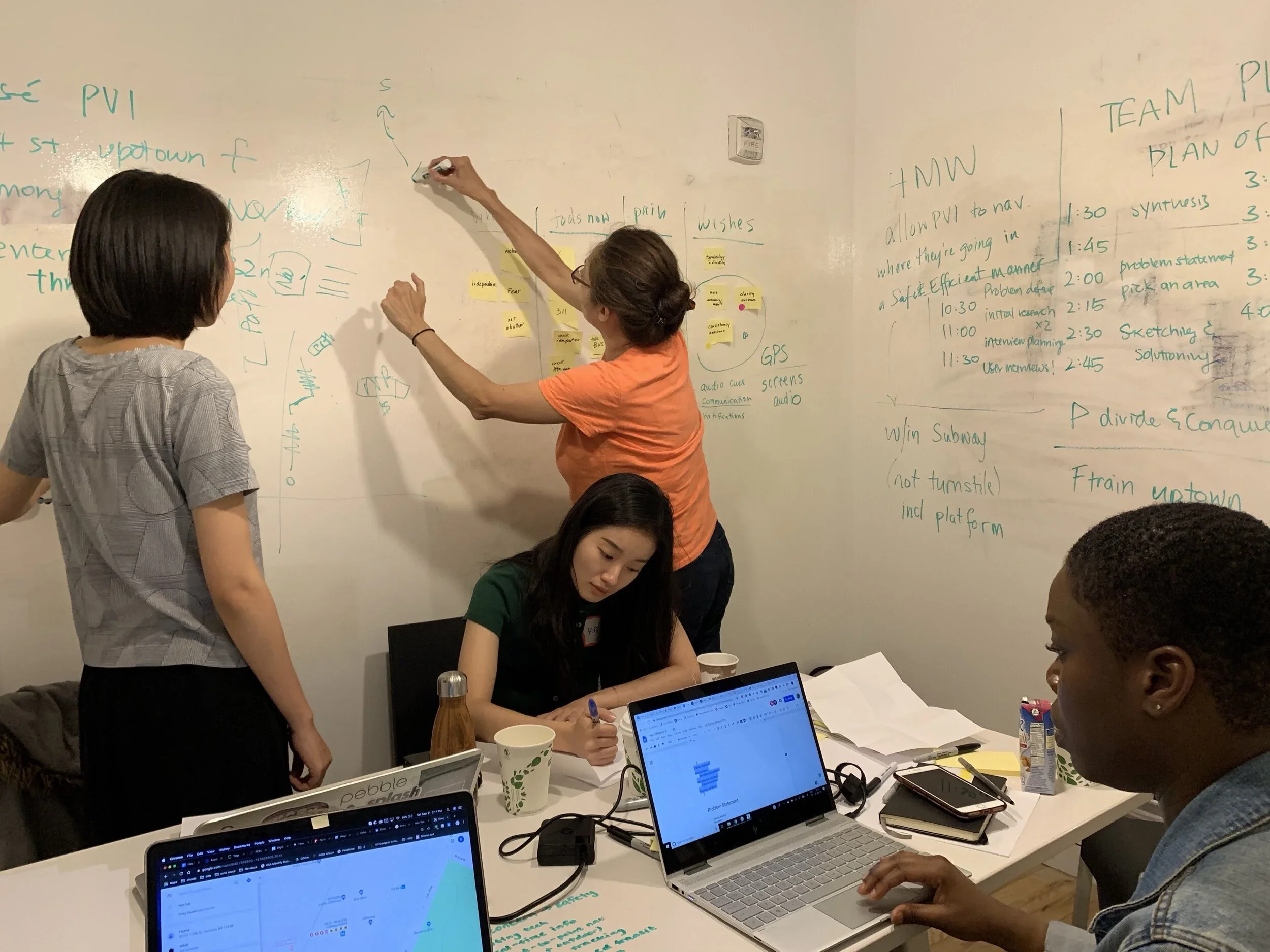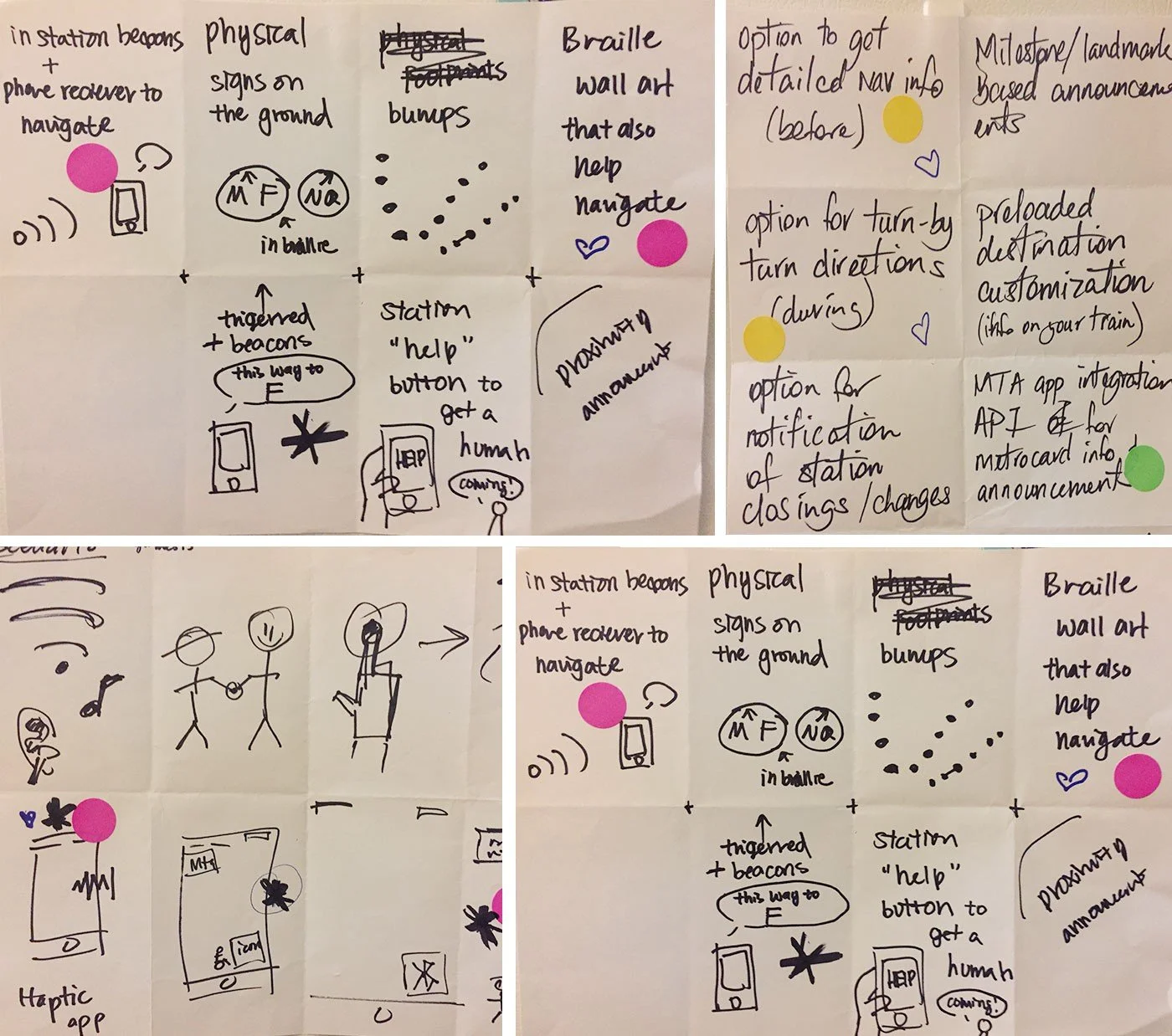Overview
Conceptualize solutions that can address the needs of specially-abled people with different cognitive and physical abilities.
Hackathon
General Assembly x Hex Hacks
Role
UX/UI Designer — Research, Data Synthesis, Interviews, Sketches & Wireframes, UI Design, Prototyping
Year
2019
Defining the Scope
Other problem spaces that were tackled during this hackathon included unconscious bias and access to opportunities. My team concentrated our focus on accessibility. Being based in New York City, we addressed the ongoing issue regarding accessibility on the NYC subway system. While swapping stories, one of our team members shared,
“The other day I was at Roosevelt Island [Station] and saw a person who was blind struggling to find the escalator with their white cane.”
Often times the escalators and elevators are closed for “repairs”. This service disruption is not only inconvenient for able-bodied commuters but a potential danger for those with physical impairments.
“In New York more than 2% of people suffer from visual impairment—not including the millions of tourists with disabilities that visit the city.”
User Interviews
To support our assumptions, we took a visit around the corner to Selis Manor, housing for people with visual impairment and/or physical disability.
There, we asked permission to survey the lobby and interview the residents with visual impairments about their experience navigating the subway.
50% had other impairments aside from vision
75% used a private car service
All were discouraged to use the subway due to safety concerns
Pain Points:
Lack of clear and consistent announcements
Large stations with multiple hallways
Navigating during rush hour
Defining the Problem
Brian is a middle aged man, partially blind, and residing in Midtown. He decides to visit his family in Forest Hills and needs to take the subway from 34th St. - Herald Square station. Entering the station through 6th Ave and 32nd St. the complex layout of the station leaves Brian disoriented for a moment.
How might we make navigating subway stations safer and more efficient for people with visual impairment?
Process
Ideation
Our solution is a mobile app that can pull real-time track schedules and train statuses while utilizing haptic feedback, text-to-speech, and turn-by-turn navigation to assist those with visual impairments when navigating complex spaces such as a subway system.
Using haptics, the app can communicate different cues to the user. For example, when a turn is approaching, the phone will send a strong vibration notifying the user of a directional cue. Once it’s time to make the turn, the haptic feedback pattern will change to signal that immediate action needs to be taken.
Mid-Fi Wireframes
People with Visual Impairments (PVI), will frequently encounter able-bodied commuters with good intentions to led a helping hand.
Unfortunately, due to possible lack of experience in PVI care, the assistance may not be effective. So we also took into consideration the experience for a secondary user.
Bold and vibrant UI, avoiding distracting patterns
UI displays active interactions such as voice assistance and differing haptic patterns
The use of extra large iconography and text are for those with partial visual impairment and any station worker or good samaritans helping out along the way. To give users a sense of independence from additional assistance, verbal guidance is also implemented and kept conversational and easy to understand.
Achievements
Out of 19 teams:
Top Prize for Sustainability
Consideration of business value and how the solution might work IRL
Honorable Mention for Research
Research-driven decisions and flexibility to pivot with new information



